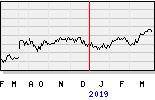
At our Global Packaging R&D Centre, we’re putting significant investment into developing new sustainable packaging materials and technologies. Read how this is accelerating the delivery of our plastic goals.
Unilever's investment in materials science and technology has more than doubled in recent years
We're working on a range of solutions to advance the delivery of our plastic goals
Through our ‘Future Flexibles’ programme, we’re developing materials that are both recyclable and compostable
Our ambition is an end to plastic pollution through reduction, circulation and collaboration, and our Global Packaging R&D Centre is home to a specialist team of experts dedicated to making this vision a reality.
We’ve more than doubled our investment in materials science and technology in recent years and we’re further boosting our in-house expertise as we accelerate delivery against our ambitious plastic goals.
“Our plastic progress is industry-leading, but we cannot be complacent,” explains Pablo Costa, our Global Head of Packaging.
“That’s why we’re now taking materials science into our own hands. Our aim is to optimise what we can do in-house, while working end-to-end with our partners and peers to bring these solutions to market.”
Increasing our use of recycled plastic content
Incorporating more post-consumer recycled (PCR) content into our packaging is key to reducing our virgin plastic use. But it’s not simply a case of swapping one for the other: it’s a complex technical challenge.
The recycled plastic we use undergoes rigorous testing and quality checks to ensure our packaging looks and performs like virgin plastic, for example, smelling fresh and with colours that are still bright and appealing to consumers.
This year, our Packaging R&D team characterised 160 grades of recycled plastic content to create a digital tool that can predict packaging colour, eliminating the need to create a physical prototype with recycled materials just to see what it will look like. This is saving a huge amount of time and resource, cutting development time by around 25%.
We also use our Advanced Manufacturing Centre – our pilot-scale plant for in-house testing – to optimise our materials and designs virtually before we bring them to market. This further reduces the need for physical tests and factory trials and helps us ensure our packaging is then fit for wide-scale factory roll-out.
Two Unilever packaging material scientists testing samples to check their barrier properties against moisture, oxygen and light.
Developing next-generation flexible materials
As part of our goal to make 100% of our flexible plastic packaging reusable, recyclable or compostable by 2035, we’re working on a range of solutions. Our approach is to first eliminate non-essential packaging by scaling alternative product formats and business models. We’re realistic that these will take more time and systemic change, which is why we’re also developing material alternatives to flexible plastic.
Through our ‘Future Flexibles’ programme, we’re developing materials – for things like pouches and sachets – that are both recyclable and compostable. This means designing materials that are compatible with recycling systems and naturally biodegradable.
Right now, paper is the only widely recyclable and compostable packaging material on the market. However, on its own, paper is insufficient as a packaging material. It has low barrier properties, it rips easily in industrial production settings and it doesn’t melt, which makes sealing the pack extra challenging. This is why many paper packaging solutions today often require a thin layer of plastic film – to provide barrier protection, and seal and protect the product inside.
“Packaging liquid products like laundry detergent and shampoo in paper is one of the most technically complex challenges we’re tackling in R&D,” explains Pablo. “They have higher barrier requirements compared to dry products. The solution lies in removing the plastic film layer by developing material alternatives that can still seal the packaging and provide barrier protection, without impacting its recyclability and natural biodegradability.”
Our Packaging R&D team constantly evaluates emerging materials and technologies. To date, we’ve assessed over 3,000 technologies, including those from other industry sectors – like pharmaceuticals and electronics – that are not currently used in packaging. As we continue to scout new innovations, we’re now working with partners to adapt and test the most promising on our broad portfolio.
“Switching to recyclable and compostable paper flexibles will require major industry transformation,” Pablo says. “There are no quick fixes. But we’re already starting work to prepare our supply chain – and our consumers – for the transition.”
Unilever scientist testing paper-based materials to see if they will retain their quality, strength and appearance throughout the supply chain.
Part of a bigger picture
Creating new sustainable materials and technologies goes hand in hand with our work to develop and deploy entirely new packaging formats and scalable reuse–refill models.
We also continue to call for systems change, because voluntary action by businesses is insufficient to turn the tide on plastic pollution. We need ambitious, coordinated policy measures across the full plastic life-cycle that help scale solutions and ensure all businesses play by the same rules.
“Only by working together will we scale alternative materials, formats and models and get closer to delivering our goals,” says Pablo. “We’re all in when it comes to leading this change.”
see pictures on
https://www.unilever.com/news/news-search/2024/unilever-boosts-investment-in-packaging-rd-to-cut-virgin-plastic/?utm_source=SignUp&utm_medium=Email&utm_campaign=NewsSignUp
